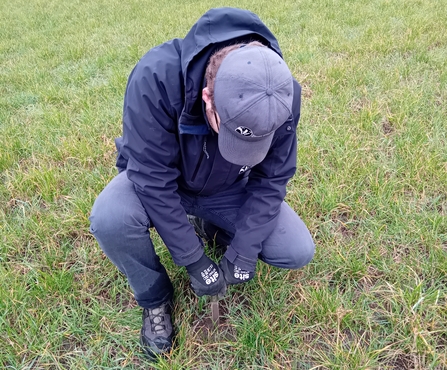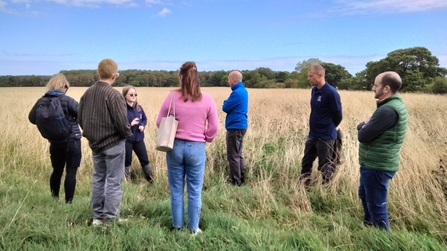What is Biodiversity Net Gain? - The Wildlife Trusts
Biodiversity Net Gain Update – One Year On
Biodiversity Net Gain (BNG) became mandatory in February 2024, and since then, Northumberland Wildlife Trust has been doing lots of work behind the scenes to set up our first habitat bank.
Because BNG is all about creating new habitats, most of the land we already manage isn’t suitable for the scheme. Our BNG work therefore began in April 2024 with the completion of the purchase of Earsdon West Forest. The site has previously been managed to produce haylage/silage, which means that it’s a lovely blank slate for us to create lots of new habitats. It’s also very close to our other Druridge Bay sites, which means it can feed into wider landscape benefits by linking up to existing biodiversity-rich sites. At the same time as we were purchasing the site, I moved over from my old job as Conservation Officer into the role of Biodiversity Net Gain Manager and immediately set about figuring out what we needed to do to set this site up as a habitat bank.
Biodiversity Net Gain is highly regulated and there are lots of legal requirements we must work our way through before we can sell any biodiversity units. The first of those is to agree a Habitat Management and Monitoring Plan with the local planning authority (Northumberland County Council in this case). To write that HMMP we needed to know what we were working with on the ground, so summer and autumn of 2024 was mostly taken up with site surveys. This included a habitat condition survey, grassland vegetation surveys, and a soil nutrient assessment.

James, Conservation Assistant at Druridge Bay, taking one of 400 soil cores!
With the results of those surveys in hand, over the winter I sat down with my colleagues and we came up with a first draft of our HMMP. It included what sorts of habitats we wanted to target and details of how we were going to create and maintain those habitats across the 30-year period required by law (though we’ll look after them for much longer than that in reality!). We sent that off for review, and after a few tweaks, our second draft is now back with Northumberland County Council and it will hopefully be approved soon.
Once the HMMP is approved, the site will go into a legal agreement known as a Section 106 agreement. That will set the HMMP in stone and we’ll then be legally required to abide by it. After the Section 106 agreement is signed, we can register our site with Natural England and start selling our units. We’re hopeful that they’ll be ready to sell by summer!
However, the HMMP is just one area of work. In preparation for being ready to sell, we’ve also been trying to get our name out there to industry contacts so that they know we can provide them with the units they’ll need in the future. To do that, we’ve been adding our information to national databases of BNG habitat banks, and we’ve also set up a dedicated BNG webpage on our website. I was also very pleased to host visitors from lots of partner organisations to Earsdon West Forest back in late summer/early autumn, so that they could see the site and discuss our vision for it’s future.

Alice, BNG Manager, leads a site visit to Earsdon West Forest.
Slightly less excitingly, we’ve also been working on two areas of behind-the-scenes administration for the service. These systems are important to our success, so it’s crucial we get them right. The first of those is systems for recording our sales, which will make it easier in the future to report on progress. The second is a robust governance structure that ensures our BNG work aligns with our overall charitable aims.
Looking to the future, we’re hopeful that our legal agreement will be in place and we’ll be ready to start selling units by late spring/early summer. At that point, we’ll also need to start delivering the plan we’ve been working hard to perfect – no small task! And if that wasn’t enough, then we’ll do it all over again with the other two sites that we’ve identified as potential habitat banks.
If you’d like to find out more about our BNG offer, then visit our BNG web page here:
If you want to find out what other Wildlife Trusts have been up to, then visit The Wildlife Trusts BNG web page here:

